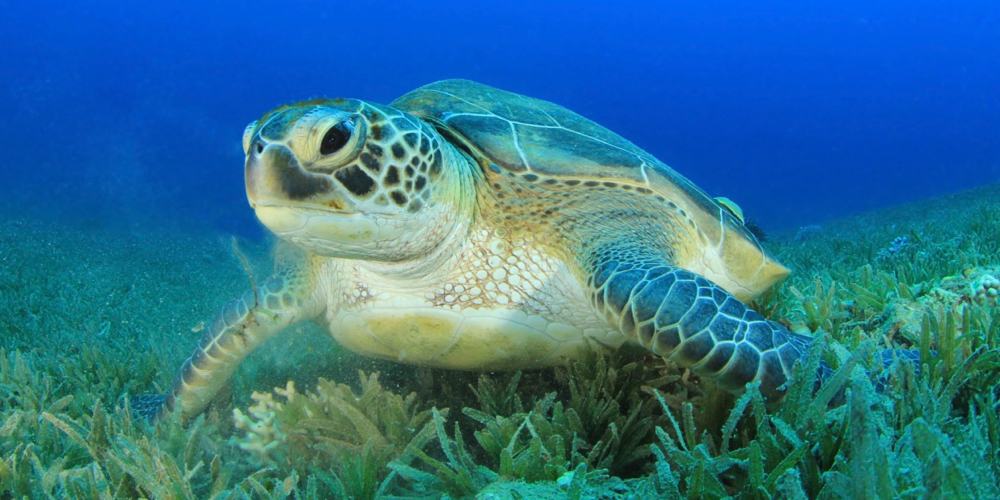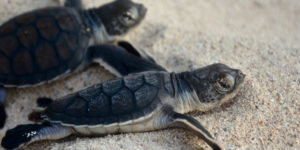
The next great success story for local environmentalists may be the green sea turtle.
The species is listed on the Virgin Islands Threatened and Endangered Species list as “endangered,” but has been upgraded on the federal list to “threatened” in some areas, including near Florida.
To observe “Endangered Species Day” on Friday, Nicole Angeli said two local Fish and Wildlife biologists will make presentations as part of the Friends of the Virgin Islands National Park Virtual Seminar Series. Victoria Beasley, a wildlife biologist, and Danielle Olive, a fisheries biologist, will discuss making responsible choices on land and in the water.
Details on the seminar and information on participation are online at the Friends of the V.I. National Website.
An “endangered” species is one believed to be in imminent danger of extinction. A “threatened” species is one that scientists believe could become endangered in the foreseeable future in all or most of its habitat.
Angeli, director of the Fish and Wildlife Division of the V.I. Department of Planning and Natural Resources, credits conservation efforts with what looks like the start of a turnaround for the green sea turtle.
Beginning in the 1980s, there have been widespread community efforts in the territory to protect turtles, their nesting sites and eggs and hatchlings. Much of the work has been done by volunteers.
“All conservation is a community effort. It has to be,” Angeli said in a recent interview with the Source.
“We work with a lot of different organizations,” she added, including nonprofit conservation groups, the National Park Service, marine interests and the University of the Virgin Islands as well, of course, as the U.S. Fish and Wildlife Service.
One of those partners is Coral World Ocean Park on St. Thomas, where Erica Palmer, a veterinarian technician, oversees a turtle education program.
Besides being a local and tourist attraction, the park has long served as a rehabilitation facility for injured wildlife, both land and sea, including turtles that may be victims of boat strikes, line or net entanglements or that have ingested plastic bags.

It is also the permanent home of four green sea turtles that are considered non-releasable because they cannot survive in the wild.
One of those, Palmer said, had a history of serious medical problems. Although it is now healthy, having been cared for in its early years at the park, it is so used to captivity that it can’t live on its own.
The other three were “stragglers” – hatchlings that were left in a nest when the rest of the family broke out of their shells and took off for the ocean. The original idea was to feed and care for them until they could become independent, but then, at the request of Fish and Wildlife, they became stars in a marine education program, Palmer said.
She is not surprised by the suggestion that green sea turtles are making a comeback.
“Looking at it globally, they definitely seem to be a more stable population” than in the recent past, she said.
To change the local status, Fish and Wildlife will need to make its case to a commission that oversees the V.I. Threatened and Endangered Species list. The Virgin Islands Endangered Species Act, passed in 1973, set up the mechanism.
Although it is impractical to keep count of turtles in the ocean, “we can count the ones that are on the land,” Angeli said. Considerable information has already been gathered by various entities through such things as beach walks, during which volunteers count tracks as well as monitoring of nesting sites. And the division is considering conducting a survey, Angeli said.
It also will need to push to reactivate the endangered species commission, which is comprised primarily of government officials but also is supposed to have two private sector, gubernatorially appointed members with expertise in the field. The commission has not met for about 20 years, Angeli said.
Besides the green sea turtle – which takes its name from the color of its body, not its shell – there are five other reptiles classified as “endangered” on the V.I. list: the St. Croix ground lizard, Virgin Islands tree boa, loggerhead sea turtle, leatherback turtle and the hawksbill turtle, as well as two more reptiles classified as “threatened” – the Virgin Islands bronze skink and the Puerto Rico racer.
The West Indian whistling duck is the only bird classified as endangered, but three more are listed as threatened: the red knot, the roseate tern and piping plover.
The list contains one endangered amphibian, the Virgin Islands Bo-Peep, and one endangered mammal, the Antillean manatee.
There are also five plants deemed endangered: Vahl’s Boxwood, St. Thomas Prickly Ash, Eggers Century Plant, Marron Bacora and one with no common name, only the scientific appellation Catesbaea melanocarpa.
Most of the species on the Virgin Islands list also appear on the national list. The exceptions are the bronze skink, the Puerto Rico racer, the Virgin Islands Bo-Peep and the West Indian whistling duck. The U.S. Fish and Wildlife Service is currently reviewing whether to add Marron Bacora to its list and is expected to make a decision before the end of the year.
“Locally listed species are provided protection under the V.I. Code as indigenous wildlife,” Angeli said. “[T]he local designation is actually stronger than the federal protection.”
The federal designation allows for the use of federal grant money for protection efforts, which is a benefit, while the local listing allows the V.I. to use other funding sources, “such as through state wildlife grants, to manage conservation efforts for locally listed threatened and endangered species when they are not federally funded,” she said.





